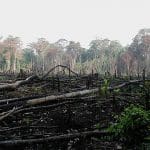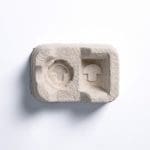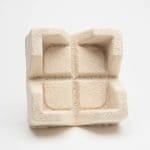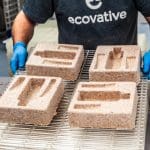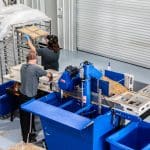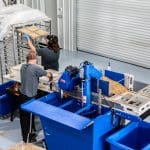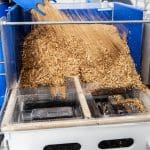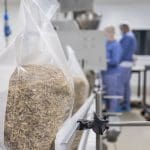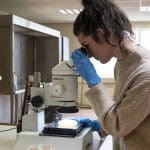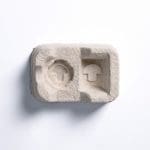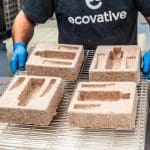Eco-packaging
Cardboard is a vital packaging material and it has long been an integral part of our lives, in all honesty up until writing this article it wasn’t something I really thought too much about. I do try to live as ‘green’ a lifestyle as I can with two young children and I sort of assumed that as it’s not made of plastic, it’s a natural product, and as long as the trees are being replanted it’s OK. However, the environmental implications of its production, use, and disposal are making me rethink this seemingly harmless material.
Cardboard production relies on the extraction of raw materials, primarily wood pulp from trees. This can lead to deforestation and habitat destruction, impacting ecosystems and biodiversity. Also the excessive or unsustainable harvesting of trees can result in soil erosion, loss of wildlife habitat, and disruptions to water cycles, contributing to environmental degradation.
The process of turning wood into pulp for cardboard production often involves the use of chemicals such as bleaching agents and additives. These chemicals can have negative environmental consequences.
Chemical runoff from manufacturing facilities may contaminate water sources, harming aquatic ecosystems and potentially posing risks to human health.
Despite being recyclable, not all cardboard is recycled. Improper disposal and lack of recycling facilities can result in significant amounts of cardboard ending up in landfills.
Cardboard in landfills contributes to waste accumulation and the release of methane gas, a potent greenhouse gas. This can contribute to climate change and environmental pollution.
While cardboard is biodegradable, the process can take a considerable amount of time, especially in landfills where conditions may not be optimal for rapid decomposition.
This slow decomposition of cardboard waste in landfills is taking up valuable space and delaying the return of nutrients to the environment
The transportation of raw materials to manufacturing facilities and the distribution of finished cardboard products involve energy consumption and emissions.
The carbon footprint associated with transportation contributes to air pollution and climate change. Long-distance transportation can exacerbate these environmental effects.
The carbon footprint of 1 kilogram of cardboard is 0.94kg of carbon emissions.
But thankfully there are now alternatives, one of them being packaging made from fungi, often referred to as mycelium packaging or fungal packaging. It is an eco-friendly and sustainable alternative to traditional packaging materials.
Mycelium’s unique ability to grow on agricultural waste, such as straw or corn stalks, forms the foundation of this eco-friendly solution. This natural bonding process eliminates the need for synthetic adhesives, aligning with a more sustainable and resource-efficient production cycle.
As mycelium grows, it forms a flexible material within moulds, resembling traditional cardboard in structure. The versatility of this moulding process allows for customised packaging designs and due to the myceliums rapid growth production cycles can also be sped up.
As well as these benefits, mycelium packaging is biodegradable. At the end of its life cycle, it can be quickly and safely composted, offering a closed-loop solution that contrasts with traditional cardboard’s slow decomposition.
Steps to make mycelium packaging
- Mycelium Growth: Mycelium, the root-like network of fungi, can be cultivated on agricultural waste or other organic substrates.
- Mold Formation: When mycelium grows and forms a dense mass, it can be moulded into specific shapes and structures.
- Substrate Selection: Agricultural by-products such as corn stalks, husks, or sawdust are often used as substrates.
- Inoculation: Mycelium spores or culture are introduced to the substrate to initiate growth.
- Mold Growth: The mycelium colonises the substrate, forming a solid and cohesive structure.
- Harvesting: Once the mycelium has fully grown and formed a solid mass, it is harvested.
- Dehydration and Sterilisation: The harvested mycelium is subjected to processes like dehydration and sterilisation to enhance durability, prevent further fungal growth, and create a stable material for packaging.
So What are the Advantages of Fungal Packaging
Fungal packaging is cultivated using waste products and is 100% biodegradable, offering a more sustainable solution to the environmental issues associated with traditional packaging materials. The mycelium growth process allows for customisation of shapes and sizes, making it versatile for various applications and it has good insulating properties, providing protection for fragile items.
It is produced using renewable resources much of which is waste product and has a lower environmental impact compared to conventional packaging materials. The cultivation of mycelium has a relatively low carbon footprint compared to the production of plastics. Research suggests that it uses up to 90% less. Mycelium can be grown on waste materials, creating a closed-loop system that re-purposes agricultural by-products.
At the moment fungal packaging is more expensive than traditionally cardboard so its use is limited to more expensive, less mass produced products including electronics, cosmetics, and consumer goods. But as research and development continues its expected that these costs will come down greatly allowing it to be more widely adopted.
Looking ahead, mycelium-based packaging holds some really exciting possibilities for a more sustainable and eco-friendly future.
Imagine a world where everyday items are crafted from mycelium, harnessing its unique properties. Picture collaborations between mycologists, biotech firms and other industries, working together to refine production processes and exploring novel applications. As technology advances, mycelium materials could become even stronger, more flexible, and better suited for other applications.This collaboration could extend mycelium’s reach beyond traditional packaging, finding its way into unexpected sectors like healthcare, electronics, and automotive.
The beauty of mycelium lies in its ability to take on different shapes, providing a blank canvas. In the future, we might see packaging designed not just for functionality but as a uniquely crafted product, reflecting the values of brands and consumers alike.
As consumer awareness grows, partly fuelled by a desire for more eco-friendly choices, businesses could move towards mycelium-based solutions. This shift might not only be driven by corporate social responsibility but also by the genuine commitment of companies to meet the evolving demands of an environmentally conscious market.
Government support and policies favouring sustainable practices could also play a huge role in encouraging businesses to adopt mycelium-based alternatives, creating an environment where sustainability is not just a choice but standard practice.
On a global scale, imagine mycelium production factories popping up in local communities, not only reducing the associated transportation costs but also creating new jobs and contributing to the accessibility and affordability of these sustainable materials.
It’s a future where mycelium isn’t confined to niche markets or old men in laboratories but becomes an integral part of mainstream culture, making a meaningful impact on reducing waste and promoting a circular economy.
In my vision, mycelium-based materials become a symbol of our collective commitment to a more harmonious relationship with the environment, leading to a better, more self-sustaining future for us all.
“We’re still very much in kindergarten when it comes to understanding how to cocreate a sustainable future for all beings—and all beings are necessary to make that future possible.” ― Paul Stamets, Fantastic Fungi: How Mushrooms Can Heal, Shift Consciousness, and Save the Planet
References:
https://wildsmithskin.com/blogs/wildsmith-journal/what-is-mycelium-packaging



